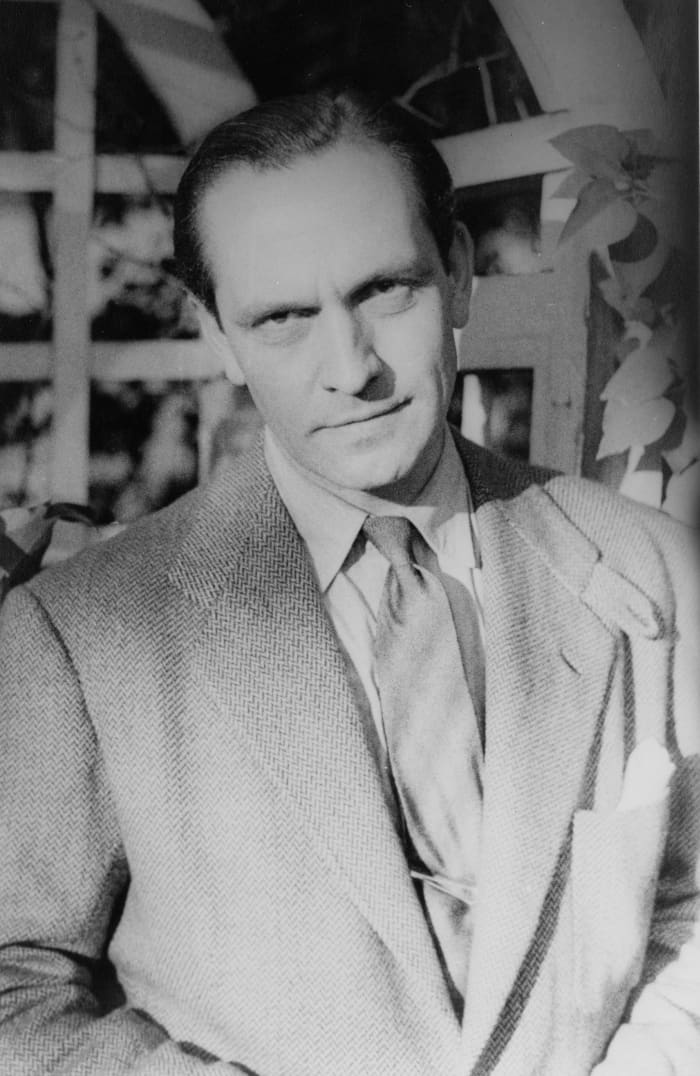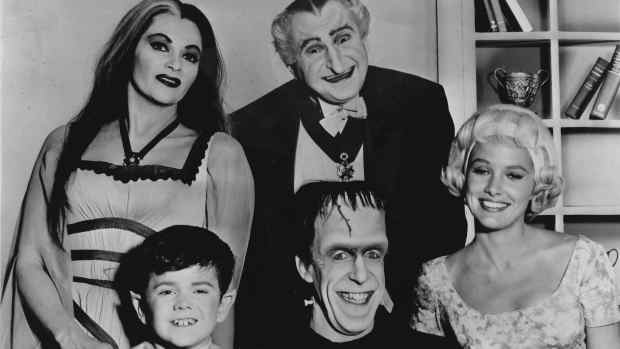Top 10 Fredric March Films
Who Was Fredric March?
Fredric March is not a name the average person is likely to know. However, he was one of the most well-respected and versatile actors of Hollywood’s studio era. If March doesn’t enjoy the same name recognition as some of his peers, it might be because of his incredible ability to disappear into numerous roles.
With a career that spanned from the 1920s to the 1970s, March moved seamlessly from a romantic leading man to an older character actor. And unlike most stars of the era, he avoided signing long-term contracts with the studios. This gave him the freedom to appear in a wide variety of films at various studios throughout his long career.
Fredric March found equal success in Hollywood and on Broadway, splitting his time between the two for most of his career. He won his first Lead Actor Tony Award in 1947 for the play Years Ago, written by Ruth Gordon (Maude in Harold in Maude). He won his second Lead Actor Tony in 1957 for the original Broadway production of Eugene O'Neill's Long Day's Journey Into Night.
He also racked up five Best Actor Oscar nominations in his career, winning the coveted statue twice: the first in 1932 (Dr. Jekyll and Mr. Hyde) and the second in 1947 (The Best Years of Our Lives). To this day, Fredric March remains the only actor to have won two Oscars and two Tonys (all in performance categories). So, if you have yet to see this great actor at work, you may want to keep reading.
A Note on This List's Order
I chose the order of these top 10 films by considering their importance in Fredric’s overall career, as well as the size/importance of his role in them. I also took into account their overall popularity today, as evidenced by their ratings on sites like IMDB and Rotten Tomatoes.
Naturally, feel free to watch them in any order you like (this is merely a recommended top 10). You might watch them in the order listed here, chronologically (like I did), or in a way that corresponds with your own movie tastes.
Top 10 Fredric March Films
- A Star Is Born
- Inherit the Wind
- The Best Years of Our Lives
- Dr. Jekyll and Mr. Hyde
- Design for Living
- Nothing Sacred
- Les Miserables
- Hombre
- The Desperate Hours
- Death of a Salesman
1. A Star Is Born (1937)
A Star Is Born is a film that spawned three successful remakes, including the critically praised 2018 version directed by Bradley Cooper. The original A Star Is Born stands alone as the only version to center around the dream of becoming a dramatic actress rather than a singer.
The aspiring actress in question is Esther Blodgett (Janet Gaynor), who leaves her hometown in North Dakota to fulfill her lifelong dream of becoming a Hollywood star. She soon discovers that it’s harder to break into the movie business than she expected.
That all changes when she meets movie star Norman Maine (Fredric) while working as a waitress at a Hollywood party. Instantly smitten with her, he takes Esther under his wing and gets her a screen test at one of the major studios. After her screen test is successful, Esther is given a new name (Vicki Lester), a studio contract, and the female lead in Norman’s latest movie.
When the film is released, Esther (now Vicki) is an overnight sensation. Meanwhile, Norman's career takes a turn for the worse. A longtime alcoholic, he's been on a downward trajectory, and now he might be beyond help.
A Star Is Born offers a fascinating look at 1930s Hollywood and gives Fredric March an opportunity to showcase both his comedic and dramatic talents in one film. Although far from being the first Technicolor film, A Star Is Born is notable for being the very first full-color movie to be nominated for a Best Picture Oscar.
It didn't win Best Picture, but the movie took home Oscars for Best Writing, and the film’s cinematographer, W. Howard Green, was given an honorary Oscar for his groundbreaking color photography.
Recommended
2. Inherit the Wind (1960)
Based on the play by Jerome Lawrence and Robert E. Lee (the playwright, not the Confederate general), Inherit the Wind is a fictionalized account of the famous “Scopes Monkey Trial” that took place in Dayton, Tennessee, in 1925.
In the film, Dick York plays the role of Bertram Cates, a young school teacher in a small Southern town who is arrested for teaching Darwin’s theory of evolution. The media gets wind of the story, and it immediately becomes national news. Renowned lawyer Henry Drummond (Spencer Tracy) is brought in to defend Cates, while the equally well-respected statesman Matthew Harrison Brady (March) offers to help the prosecution.
Naturally, since Inherit the Wind is based on actual events, most of the major characters have a real-world equivalent. Drummond is based on lawyer Clarence Darrow, Brady is based on politician William Jennings Bryan, reporter E.K. Hornbeck (played by Gene Kelly in a rare dramatic role) is based on Baltimore Sun reporter H.L. Mencken, and of course, Bertram Cates is based on teacher John Scopes. Fact and fiction collide even further as Fredric March’s actual wife, Florence Eldridge, makes her final film appearance playing her husband's onscreen wife, Sarah Brady.
Despite being based on historical events, Inherit the Wind is a fictionalized retelling of the Scopes Monkey Trial, not a documentary. In fact, the play was originally written as an allegory of McCarthyism and its chilling effect on free speech. For those who may be wondering, the film’s title is a reference to the Book of Proverbs (11:29): “He that troubleth his own house shall inherit the wind.”
3. The Best Years of Our Lives (1946)
Based on MacKinlay Kantor's novella, Glory for Me, this landmark film was one of the very first to focus on the struggles of World War II soldiers readjusting to civilian life. It's also the movie that won Fredric March the second of his two Best Actor Oscars. The Best Years of Our Lives stars March alongside Dana Andrews and real-life veteran (and double amputee) Harold Russell as three soldiers returning home after World War II.
Fredric plays the role of Al Stephenson, an Army sergeant returning to his civilian job as a banker, as well as reuniting with his loving wife, Milly (Myrna Loy), and their two children. Andrews plays Fred Derry, an Air Force pilot returning home to his wife, Marie (Virginia Mayo), whom he married only a month before he was shipped out. Fred worked at the local soda fountain as a civilian, but he’s hoping to find better opportunities now that the war is over.
And finally, Harold Russell plays the role of Homer Parrish, a Navy petty officer who lost both his hands when his battleship was torpedoed. Although Homer has adapted very well to using his hook prosthetics, this will be the first time his family (and his girlfriend, Wilma) will see firsthand his injury.
Along with Fredric’s award for Best Actor, The Best Years of Our Lives won seven Oscars, including Best Picture and Best Director for William Wyler. Harold Russell not only won Best Supporting Actor, but he was also given an Honorary Oscar “for providing inspiration for his fellow veterans through his performance.”
The Academy gave Russell the honorary award because they wished to honor him for his performance but didn’t believe he would actually win in the competitive Supporting Actor category against more established professional actors. They were wrong, making Russell the only actor to ever be given two Oscars for the same performance!
4. Dr. Jekyll and Mr. Hyde (1931)
The film that earned Fredric March his first Best Actor Oscar, Dr. Jekyll and Mr. Hyde marked a turning point in Fredric’s career, proving he was an actor truly capable of playing anything. Based on Robert Louis Stevenson’s famous novella, The Strange Case of Dr. Jekyll and Mr. Hyde, this film version was the very first sound adaptation of the novella—and is still widely considered to be the best.
Set in Victorian London, Fredric plays the role of Dr. Henry Jekyll, a well-respected and well-liked doctor. Recently, Jekyll has become fascinated with the idea that every man has the propensity for both good and evil. A large part of his fascination stems from the fact that even though Jekyll is known for his kind nature, he has found himself secretly tortured by his own immoral impulses. He comes to believe that if he can find a way to separate the good and evil sides of his personality, it would free him from both guilt and responsibility. So, secretly, Jekyll develops a formula to separate his two sides, resulting in his transformation into the animalistic and violent Mr. Edward Hyde.
Originally, John Barrymore was going to play the dual roles of Dr. Jekyll and Mr. Hyde since he had already played the roles to great acclaim in the 1920 silent film version. However, Barrymore’s contract with MGM prohibited him from accepting, opening the door for the lesser-known March to take on the role of a lifetime. Some said at the time that it was his Barrymore-like performance in the 1930 film The Royal Family of Broadway that allowed Fredric to be considered for the role.
Dr. Jekyll and Mr. Hyde is known for its groundbreaking transformation scenes and the ingenious process was not revealed until decades later. The surprisingly simple technique involved making up Fredric's face in contrasting colors, and then using matching colored filters on the camera lens so the makeup didn't register on the black-and-white film stock. As the scene went on, filters were removed, and the makeup slowly revealed itself to the camera, giving the illusion of a real-time transformation.
5. Design for Living (1933)
Directed by Ernst Lubitsch and loosely based on the play by Noel Coward, this Pre-Code sex comedy is probably best described as an American version of Coward’s very English play. Design For Living stars Fredric opposite Gary Cooper as Thomas Chambers and George Curtis, respectively, two American expatriates living in Paris.
One day, while traveling back to the city by train, the two men meet fellow American Gilda Farrell (Miriam Hopkins) and the trio immediately hits it off. They quickly discover that, not only are they all American, but they also, all work in the arts: Tom is a playwright, George is a painter, and Gilda is a commercial artist. The three keep in touch and it’s not long before both George and Tom realize that they have fallen for the vivacious Gilda.


